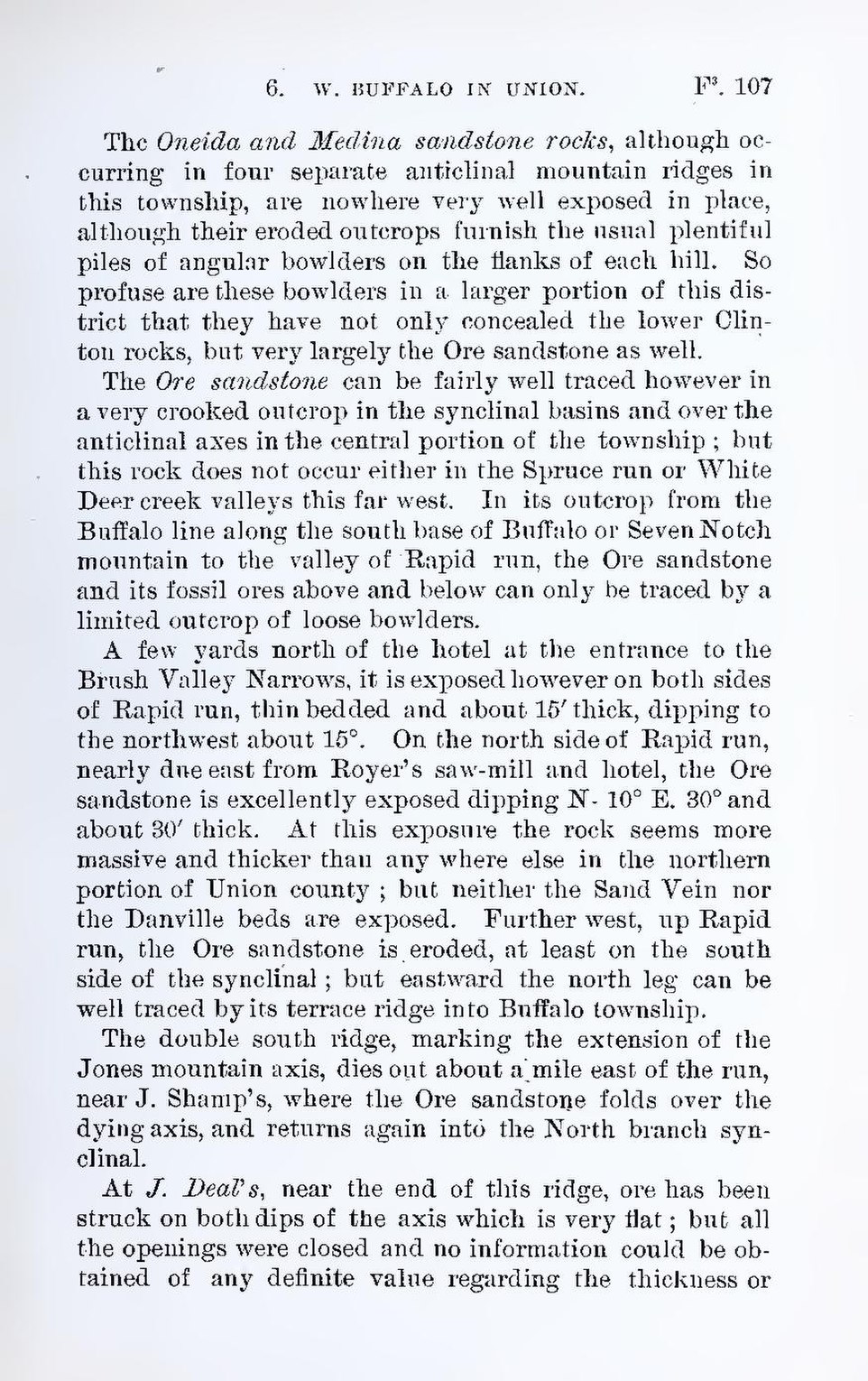The Oneida and Medina sandstone rocks, although occurring in four separate anticlinal mountain ridges in this township, are nowhere very well exposed in place, although their eroded outcrops furnish the usual plentiful piles of angular bowlders on the flanks of each hill. So profuse are these bowlders in a larger portion of this district that they have not only concealed the lower Clinton rocks, but very largely the Ore sandstone as well.
The Ore sandstone can be fairly well traced however in a very crooked outcrop in the synclinal basins and over the anticlinal axes in the central portion of the township; but this rock does not occur either in the Spruce run or White Deer creek valleys this far west. In its outcrop from the Buffalo line along the south base of Buffalo or Seven Notch mountain to the valley of Rapid run, the Ore sandstone and its fossil ores above and below can only be traced by a limited outcrop of loose bowlders.
A few yards north of the hotel at the entrance to the Brush Valley Narrows, it is exposed however on both sides of Rapid run, thin bedded and about 15′ thick, dipping to the northwest about 15°. On the north side of Rapid run, nearly due east from Royer’s saw-mill and hotel, the Ore sandstone is excellently exposed dipping N. 10° E. 30° and about 30′ thick. At this exposure the rock seems more massive and thicker than any where else in the northern portion of Union county; but neither the Sand Vein nor the Danville beds are exposed. Further west, up Rapid run, the Ore sandstone is eroded, at least on the south side of the synclinal; but eastward the north leg can be well traced by its terrace ridge into Buffalo township.
The double south ridge, marking the extension of the Jones mountain axis, dies out about a mile east of the run, near J. Shamp’s, where the Ore sandstone folds over the dying axis, and returns again into the North branch synclinal.
At J. Deal’s, near the end of this ridge, ore has been struck on both dips of the axis which is very flat; but all the openings were closed and no information could be obtained of any definite value regarding the thickness or
